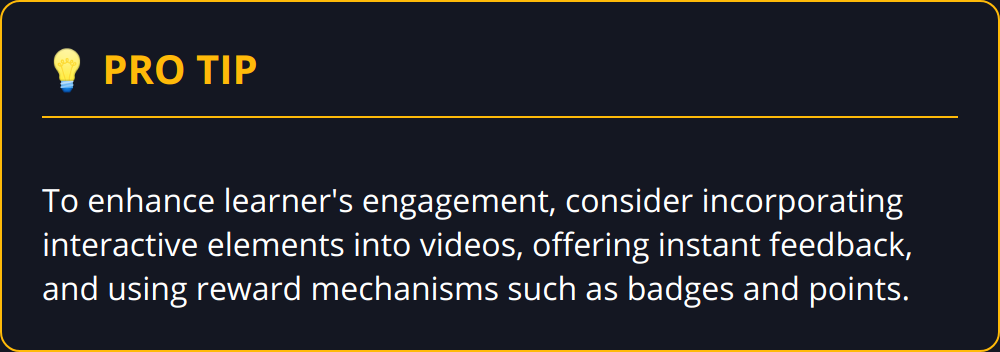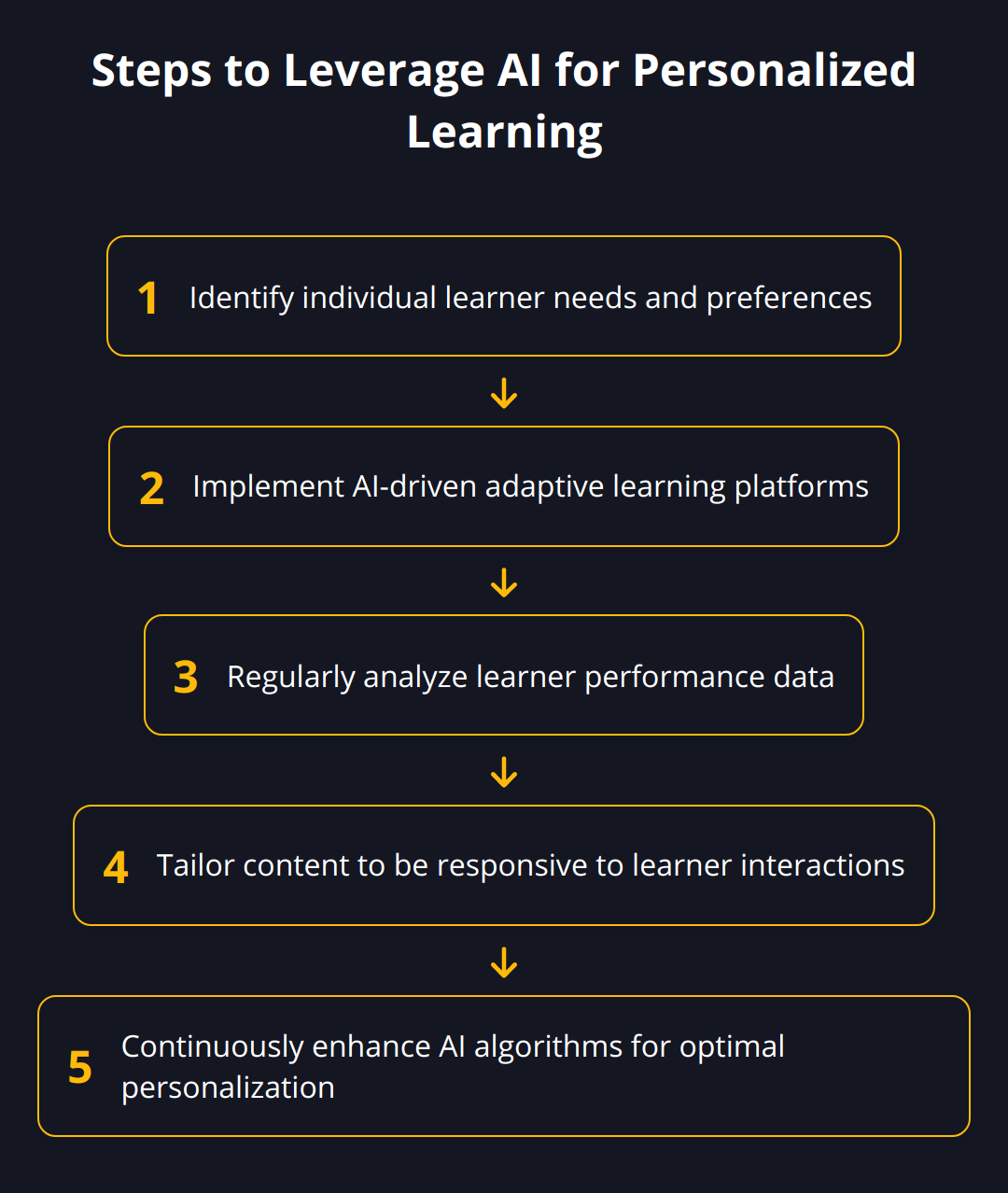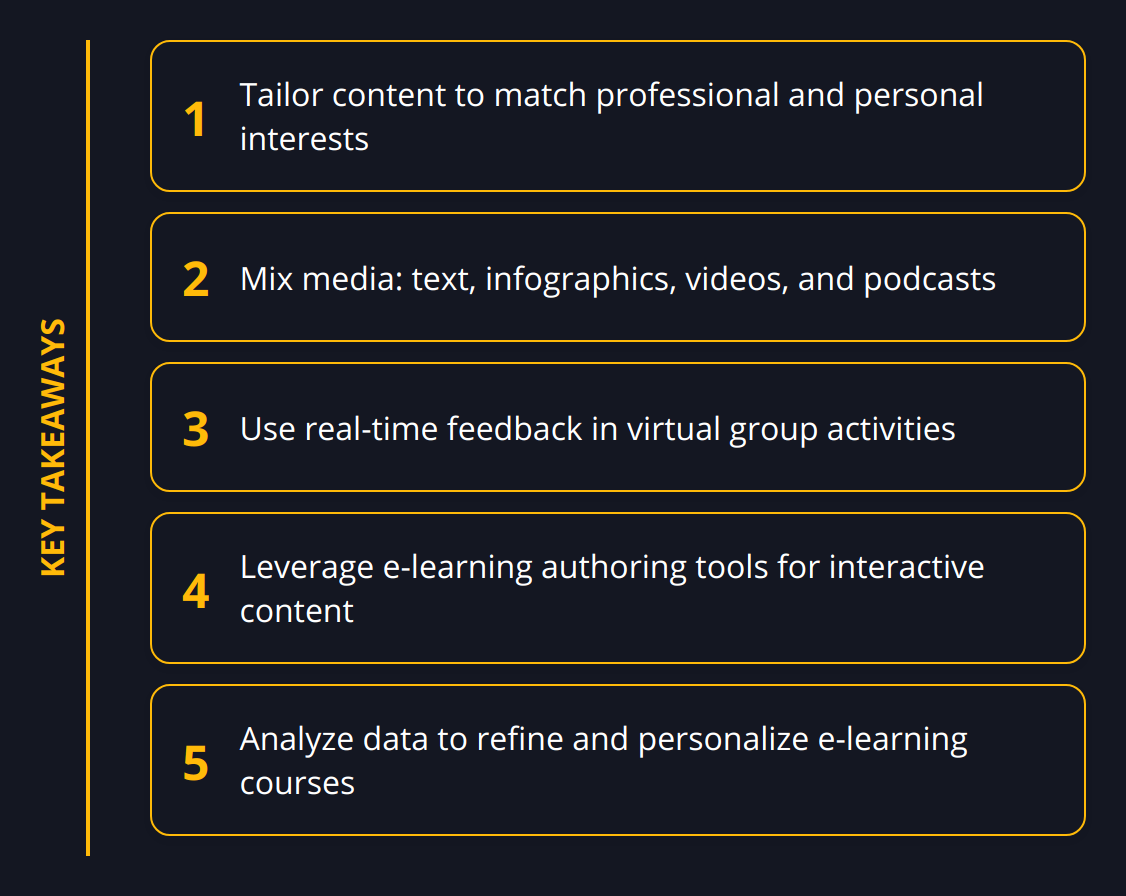Engaging learners in an e-learning environment is an ongoing challenge. We at Newroom Connect believe that an interplay of content alignment with varied media and cutting-edge technology fosters a greater commitment to learning.
To maintain learner momentum, offering dynamic feedback and adapting strategies through data analytics is essential. This post presents proven methods to heighten learner engagement, cementing success in any e-learning program.
Boosting Engagement with E-Learning
Moving beyond traditional learning boundaries is key to foster a culture of engaged learners. What grabs the attention of learners are the courses that resonate with their professional aspirations and personal interests. Tailoring content to match these interests is not just interesting, it’s downright smart. Actionable consumer insights and industry trends can serve as a starting point in developing content that sticks. For instance, if data points to a growing demand for digital marketing skills, incorporating relevant case studies from renowned marketers or real-world marketing scenarios can amplify engagement.
Content variety is also a well-established factor for sustained interest. A mix of text-based documents, vibrant infographics, and instructional videos meets diverse learning styles, keeping the learning experience far from monotonous. Tools like Camtasia can help create engaging product videos that serve as an essential asset in multimedia learning strategies. The incorporation of podcasts is another example; tech industry updates discussed in popular podcasts can supplement learning for those constantly on the move.
Moreover, virtual learning thrives on social interaction. Discussion forums ignite thoughtful conversations, while virtual group projects bridge the digital gap, stimulating collaboration akin to in-person experiences. For instance, integrating real-time feedback during group activities makes the experience more dynamic and closely replicates a live classroom environment. Practical tips to encourage this interaction include:
-
Setting clear expectations for participation
-
Prompting regular contributions with current topics or questions
-
Acknowledging insightful comments and contributions to foster a positive online community

Presenting opportunities for learners to interact not only with the content but with each other creates a shared learning journey, ultimately boosting engagement and the overall learning experience.

To conclude, engaging learners in e-learning requires a blend of personalized content, diverse media, and ample opportunities for interaction. These strategies can indeed transform the digital classroom into a vibrant ecosystem ripe for growth and development.
Interactive E-Learning Tech
The rise of new technologies has revolutionized the way we create and consume e-learning content. High-tech solutions provide dynamic, interactive ways to engage learners, and when these tools are leveraged effectively, the results can be transformative.
One of the game-changers in interactive learning is the utilization of sophisticated e-learning authoring tools. These tools empower creators to design content that is not only educational but also engaging and memorable. Take Articulate Storyline or Adobe Captivate, for instance; they offer functionalities to construct scenarios that challenge learners to apply their knowledge in simulations resembling real-world situations. The power of these tools lies in their capability to stitch together text, images, and multimedia into a cohesive, interactive narrative.
Speaking of multimedia, animations, videos, and infographics play a massive role in hooking the learner’s attention. For example, an animated explainer video can break down complex topics into digestible chunks, making the learning process enjoyable and more effective. One notable trend is the use of interactive videos, where learners can click on elements within the video to learn more or make decisions that dictate the content’s flow.
Now, let’s talk about infusing a dash of competition into the mix with gamification, which transforms learning into an exciting challenge. Techniques such as leaderboards, badges, and point systems incentivize learners to engage and progress. For instance, Duolingo’s bite-sized lessons and rewards system infuse language learning with a sense of play that makes the grind of memorization surprisingly addictive.

Here are a few practical tips for integrating modern technology into your e-learning strategy:
-
Utilize authoring tools to customize interactive scenarios.
-
Include engaging video content, perhaps using drag-and-drop interactivity.
-
Introduce gamification elements like points and rewards to encourage progress.
-
Incorporate infographics that summarize key information in a visually appealing format.

By infusing e-learning with technology that promotes interactivity and engagement, learners feel inspired to participate actively, and learning outcomes are significantly improved. The judicious use of these technologies not only keeps learners engaged but also enhances knowledge retention and application — hallarks of a successful e-learning program.
Feedback That Fosters Progress
Constructive feedback and appropriate rewards are paramount for successful learning experiences. They not only steer the learner in the right direction but also instill motivation and recognition of their successes. Let’s delve into actionable strategies that enhance the effectiveness of feedback and rewards in e-learning.
Goal-Setting for Guided Learning
A clear roadmap with defined learning outcomes paves the way for learner success. Goals should be specific, measurable, achievable, relevant, and time-bound (SMART). For instance, rather than a vague objective to ‘understand marketing,’ set a milestone to ‘complete a digital marketing workshop and apply one strategy to a campaign by Q3.’ This specific aim gives learners a concrete target and enables you to measure their progress accurately.
Actionable Feedback for Improvement
Timely and precise feedback is vital. It’s the compass that guides learners through the e-learning landscape. In practice, this means going beyond “Well done!” or “Try again.” If a learner struggles with a particular module, provide specific insights on where they went wrong and how to correct it. For example, if an incorrect answer is given in a quiz about email marketing, the feedback could highlight the best practices for a successful email campaign, leading to a resource that delves into those techniques in more detail.
Incentivizing Learner Achievement
Rewards function as powerful reinforcement for learning. But don’t limit recognition to virtual badges or points. Tangible rewards, like certificates, can be highly effective. These can be showcased in a digital portfolio or LinkedIn profile, adding professional value to the learning success. Offering advanced roles in community forums or exclusive access to expert Q&A sessions can also serve as motivation for learners to strive for excellence.
Practical Tips for Success:
-
SMART Goals: Define clear and attainable goals for learners to aim for.
-
Timely Responses: Ensure feedback is provided swiftly while the content is fresh in the learner’s mind.
-
Concrete Guidance: Always tie feedback to specific actions or concepts within the course material.
-
Visibility of Progress: Utilize dashboards or progress bars to make learning achievements visible and encouraging.
-
Reward Systems: Create a layered system of rewards that acknowledge small wins and larger achievements alike.
Through intentional goal-setting, relevant and timely feedback, and a robust system of rewards, e-learning becomes a journey of clear progression and rewarding accomplishments. Solid strategies in these areas are not just beneficial; they are essential for the success and satisfaction of learners within any digital education environment.
Refining Strategy with Data
In the constantly evolving landscape of e-learning, resting on laurels is simply not an option. Successful learning strategies hinge on their ability to adapt and improve continuously. The winning card? Data analytics. This treasure trove of insights is the linchpin in understanding what works, what doesn’t, and what can be done better in your e-learning offerings.
Harness the power of data analytics to transform numbers into actionable strategies. Scrutinize completion rates, quiz scores, and time spent on modules. If you notice a spike in drop-off at a certain module, it’s a signal to reassess the content or its delivery. Perhaps the module is too dense or not interactive enough. Refine it until it shines.
Feedback loops are invaluable. Encourage learners to provide input on course materials and learning experiences. Their critiques and suggestions are not just opinions; they’re a goldmine for enhancing your courses. If multiple learners indicate a particular section is too complex, simplify it or provide additional resources. Remember, the learner’s voice should steer the course design ship.
In a world where personalization is king, artificial intelligence (AI) presents untapped potential for personalized learning. Forget one-size-fits-all; AI tailors learning paths, making them adaptable to individual pacing and preferences. This is not a passing trend but a competitive edge. Consider solutions like adaptive learning platforms that modify content based on learner performance.

To wrap it up, here’s a rundown of practical steps to keep your strategy sharp:
-
Monitor key performance indicators (KPIs) to identify trends and areas for improvement.
-
Treat learner feedback as a directive, not a suggestion.
-
Reassess and tweak content regularly – stagnation is the enemy of engagement.
-
Explore AI and other innovations to personalize and enrich the learning journey.
Remember, exceptional e-learning experiences are born from a relentless pursuit of improvement. By capitalizing on data, feedback, and technology, you create a dynamic learning environment that continuously evolves and resonates with learners. Keep refining, and your learners will thank you for it.
Wrapping Up
Elevating learner engagement in e-learning requires a multifaceted approach. At Newroom Connect, we pride ourselves on providing virtual platforms that break through the digital static, crafting an immersive learning atmosphere that captivates and educates. The strategies we’ve discussed throughout this post are more than just ideas; they are actionable steps that lead to tangible improvements in learner interest and information retention.

Summarizing our Key Tactics
Engaging content that resonates with learners’ interests, a variety of media formats, interactive technologies, and consistent, actionable feedback form the core of a strong e-learning engagement strategy. Let’s recap these pivotal points:
-
Personalization is vital for capturing and holding learner attention
-
Diversity in content delivery caters to different learning styles
-
Interactive tech like gamification enriches the learning experience
-
Feedback loops and data analysis ensure courses are always improving
The Critical Role of Strategy Reassessment
In the dynamic world of e-learning, refinement is the name of the game. Strategies must not be static; they should evolve with the learner’s needs and advancements in technology. Regular assessment and course correction ensure the content remains effective and engaging, setting both learners and organizations up for success.
A Call to Action for Continuous Implementation
The journey to elevate learner engagement is ongoing. We at Newroom Connect encourage you to apply the strategies shared here and to remain committed to fostering progressive learning environments. By leveraging the tools and insights available, our virtual platforms can effectively support your training objectives, whether it’s for virtual trade fairs, showrooms, or e-learning platforms.
To explore how we can help enhance your e-learning strategies, visit our virtual platforms.
In closing, it’s clear that learner engagement isn’t just a one-off task; it’s a commitment to iterative improvement, innovation, and understanding of your learners’ evolving needs. With the foundations set and an eye toward consistent advancement, you can elevate your e-learning programs to new heights of interactivity and effectiveness.


